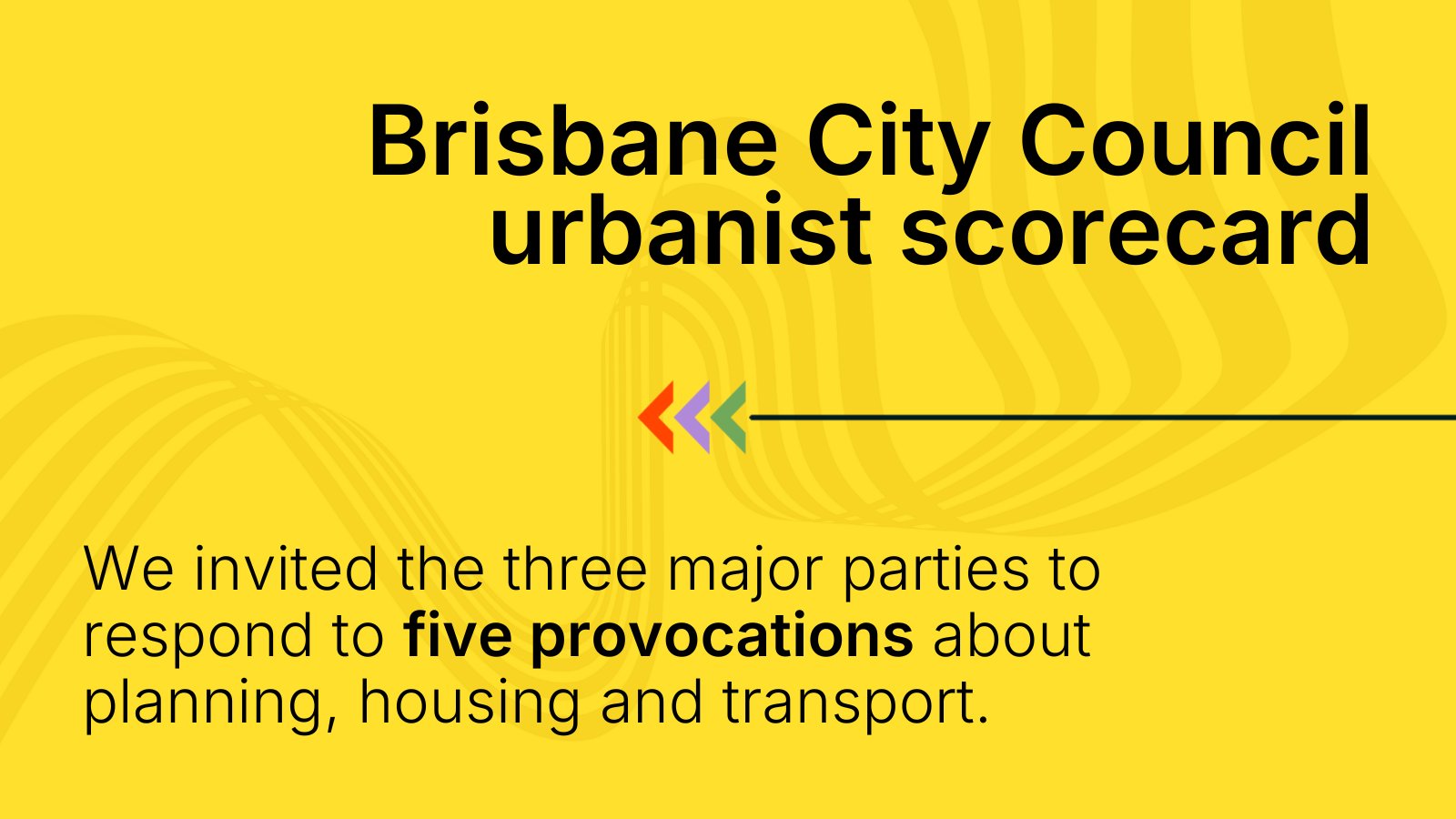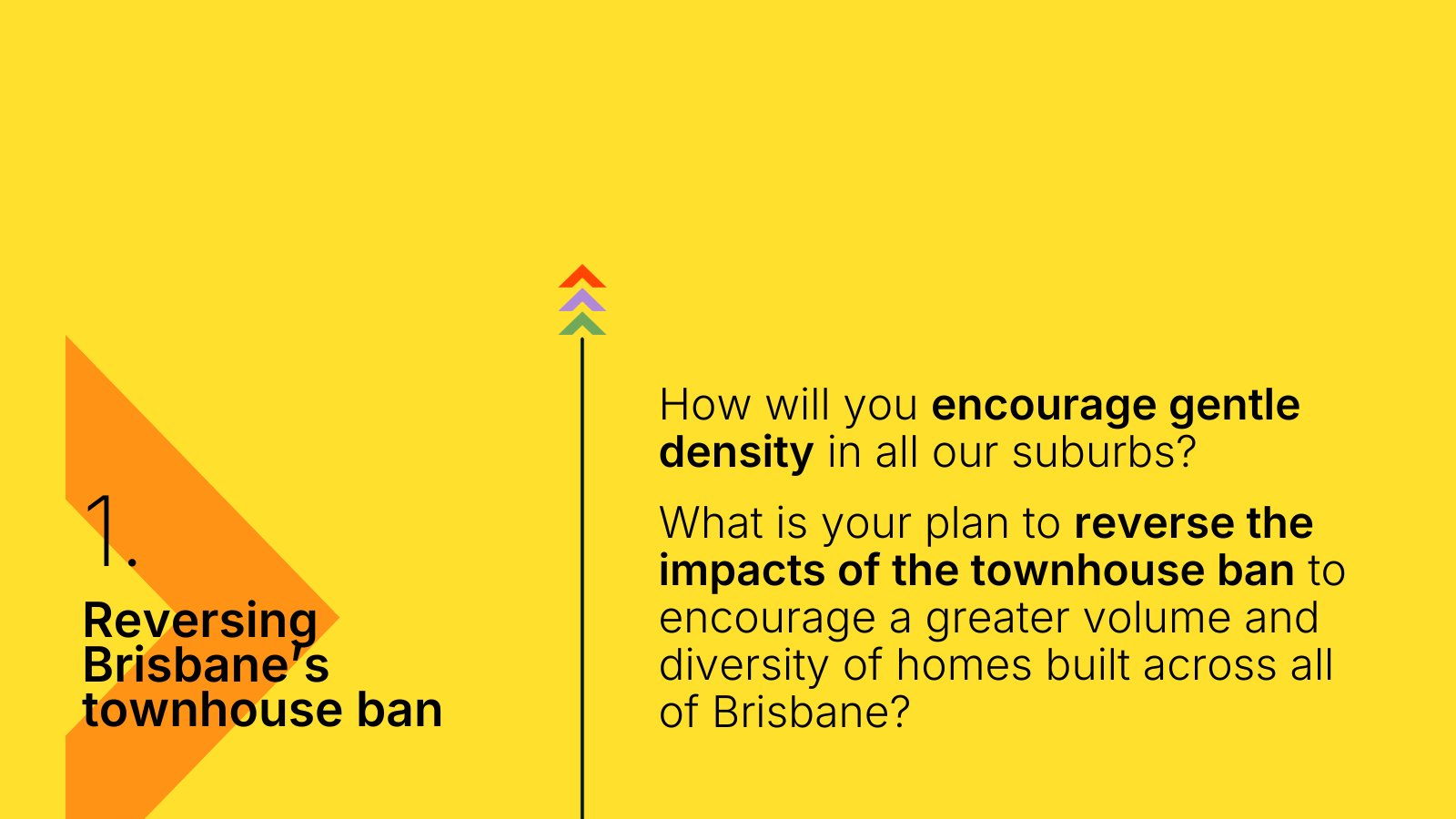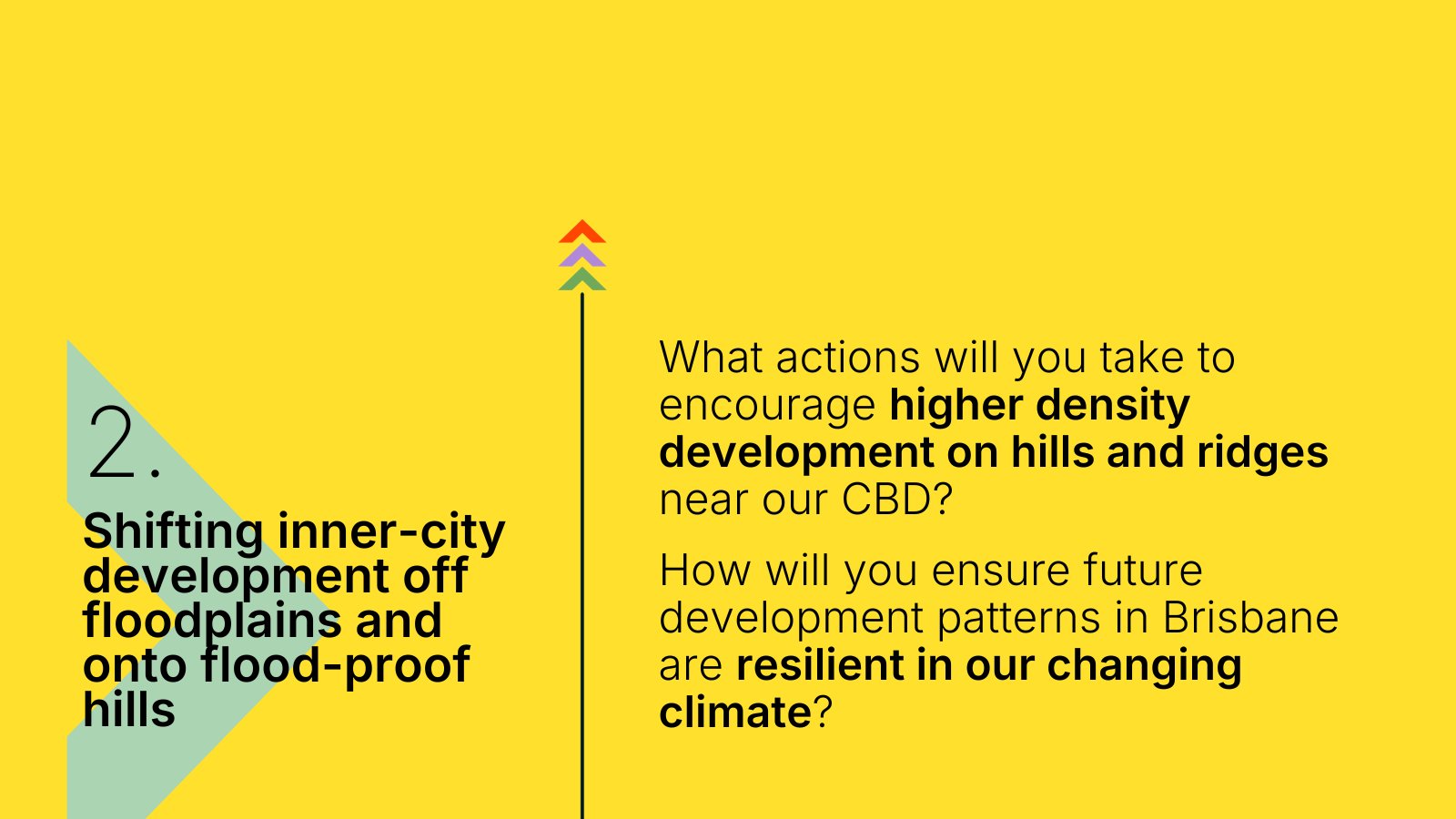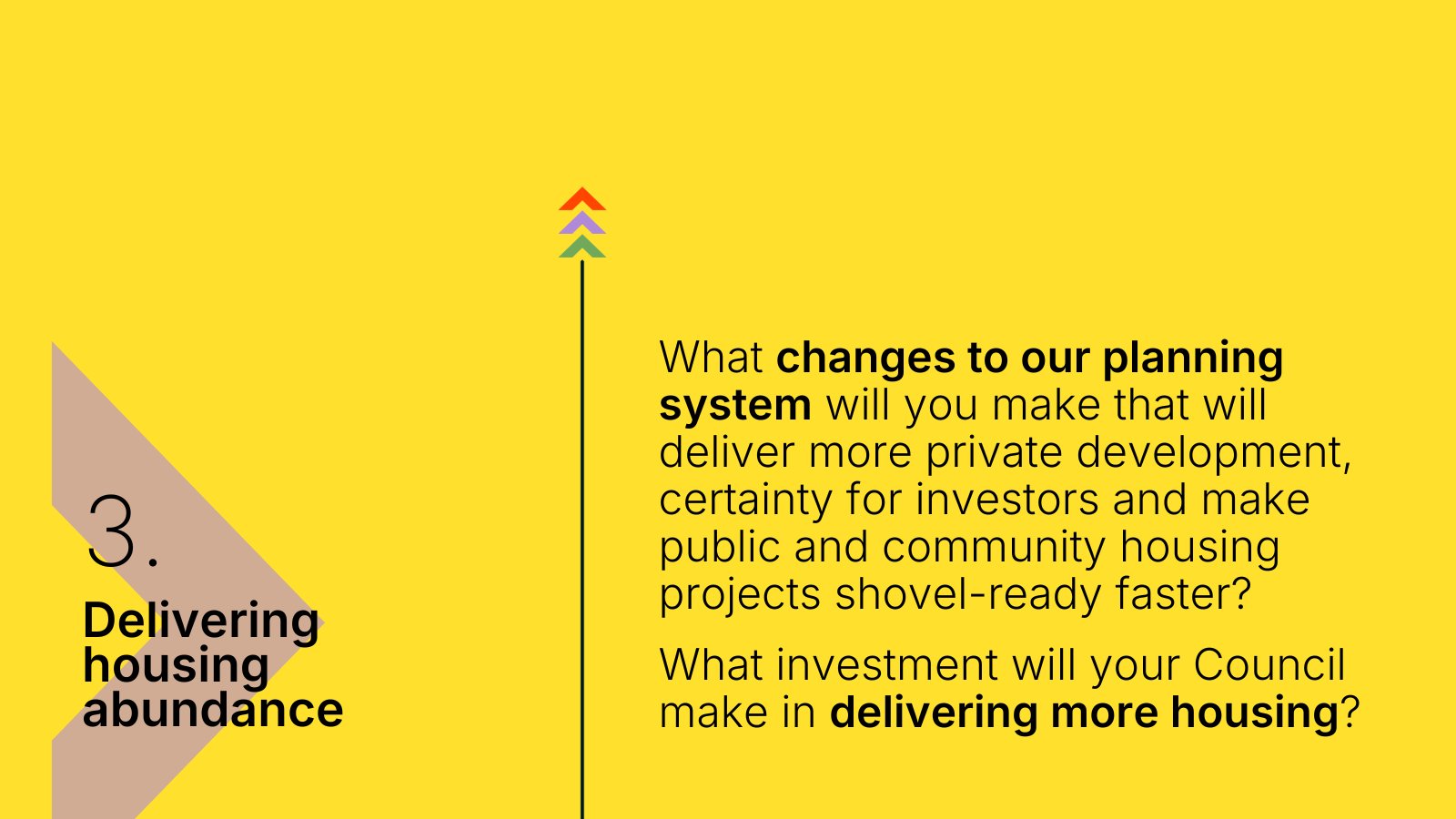Brisbane City Council mayoral election: urbanist scorecard
On February 2nd, we reached out to Adrian Schrinner (incumbent Lord Mayor, LNP), Tracey Price (Labor) and Jonathan Sriranganathan (Greens) with an invitation to respond to our survey on what their plans are for housing, planning and transport reform.
We asked them to respond to five provocations.

1. Reversing Brisbane’s townhouse ban
In 2018, Council introduced a ban on the construction of townhouses and low-impact apartments in many of our suburbs — despite these homes being identified as a market gap in Brisbane and the preferred home for people looking to downsize.

Six years later, we are facing a crisis in our suburbs with our ageing population not having options to downsize and age in place.
Increasing the constraints on building types and narrowing the already limited footprint that can be constructed decreases market competition.
Large developers will continue to benefit from constrictive planning controls that reinforce a market they already thrive in — particularly how little developable land we allocate within the city for medium, mixed use and high density.
A vibrant city has a variety of built forms to cater to the diverse needs of its community, the townhouse ban and restrictive policy on low density infill diminishes a neighbourhood’s organic evolution.
Limiting the locations where denser housing options can be approved reduces the opportunities for community- and market-driven growth in alignment with changing demographics and lifestyle choices.
2. Shifting inner-city development off floodplains and onto flood-proof hills
As climate change makes severe weather more frequent and exposes our neighbourhoods to more frequent floods, we need to think about what our city will look like in a worst-case climate future.

The last twenty years of planning policy have left the focus of development in under-utilised post-industrial land on floodplains, leaving renters and young homeowners vulnerable during floods.
At the same time, character precincts on the hills next to our city’s core insulate wealthy homeowners from development, despite being the safest places in floods.
Protecting the hills and ridgelines in our inner city with traditional building character protections and low-density residential zoning comes directly at the cost of condemning apartment residents to increased flood risks and mounting insurance costs.
Our urban fabric is broken up by heavy precinct-level development on floodplains when just across a street or trainline, detached homes worth millions sit unable to be touched.
This is clearly an example of exclusionary zoning.
3. Delivering housing abundance
Building approvals have collapsed — particularly in apartments. Our social housing waiting list continues to balloon and new social housing completions remain at historically low levels. Rents are skyrocketing at an unprecedented rate.

We need decisive action to build more homes of every type and tenure, and the quickest and most effective tool Council has to achieve this is planning reform.i
Council needs to take responsibility for making sure that the thousands of private and social homes across the entire city that we need to stop the housing crisis are able to be built where they are wanted and needed most.
Delays, long lead times for approvals and unnecessary appeals not only make projects from existing developers uneconomical, they also prevent newer, smaller and more innovative developers from entering the market. These factors also delay public and community housing projects.
We are seeking a reduction in the discretion in our planning system, where a much smaller set of much stronger, better-enforced rules allow for projects to be approved quicker.
4. Implementing parking reform
A significant proportion of Brisbane’s valuable inner city land is currently reserved for free or subsidised car parking — at the expense of public and active transport connections, street trees, and more curbside dining and shopping options.

The cost to drivers of this parking is not responsive to the demand, resulting in a significant but unaccounted public subsidy for private drivers.
Australian research has suggested that each car park in a new apartment building adds between $50,000 and $150,000 to the cost of the home, and that linking off-street parking requirements to of bedrooms may lead to inappropriate parking allocations for almost 35% of households.
Not only does this make apartment living more unaffordable, it encourages reliance on private cars in neighbourhoods that should be prioritising active and public transport.
This misallocation of valuable land — both public and private — to private vehicles comes at a great opportunity cost. We cannot beat congestion by inducing more demand on our streets and we cannot drive down demand for personal cars by continuing to subsidise their parking.
5. More representative planning consultations
Mounting evidence suggests that community consultations and optional democracy initiatives, particularly hyperlocal forms that permeate our planning system, are unrepresentative.

Our planning system privileges the voices of older homeowners with the civic skills and networks to navigate it.
This comes at the expense of renters, young families and aspirational residents who by chance of fate or privilege happen to not live in wealthy, desirable areas.
We want planning consultations that are accessible and tractable to everyday people.
Removing development-by-development consultations is one step, but having Council meet people where they’re at, on the doors and in the streets, to talk about their city’s future is the next.
We want Council to have certainty that the City Plan was designed in a way that reflects the majority of the population, both present and future.
We look forward from hearing from all three parties and releasing our scorecard at our launch on 2 March 2024.

What do Brisbane’s local elections mean for our housing future
RSVP on Humanitix - What do Brisbane’s local elections mean for our housing future hosted by Greater Brisbane. The Polish Club, 10 Marie St, Milton QLD 4064, Australia. Saturday 2nd March 2024. Find event information.